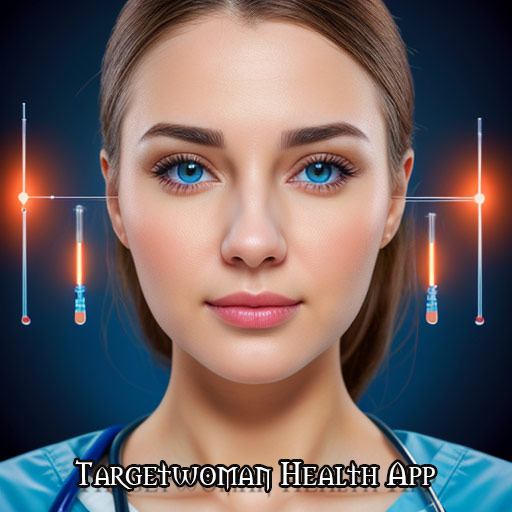Abdominal Aortic Aneurysm
An aneurysm indicates a localized dilation of a blood vessel. An aortic aneursym is a medical condition where a large artery bulges. This usually occurs due to some inherent weakness in the aortic wall at a particular location. Abdominal aortic aneurysm generally occurs due to infection, congenital weakening of the arterial wall or trauma. With an aortic aneurysm, there is a risk of rupture and possible internal hemorrhage. Rupture of an aneurysm is a medical emergency. If not treated immediately, this condition can be fatal. Men are more likely to develop abdominal aortic aneurysm. Typically this condition occurs in the age group of 60 - 70 years.
Cigarettte smoking, hypertension, diabetes and high cholesterol can increase the risk of developing aortic aneurysm. Most of the time abdominal aortic aneurysm is asymptomatic. This condition is often noticed during abdominal scan or CT scan. Often aortic aneurysms develop over time. The common cause of an aortic aneursym is arteriosclerosis. This consequently leads to weakened aortic walls. An abdominal aortic aneurysm may cause throbbing in a part of the abdominal mass. But if there has been a rupture, it can result in severe pain in the lower back. The person is likely to feel faint and light headed. There is excessive thirst and tachycardia.
Abdominal x-rays and angriography of aorta can help reveal an aortic aneurysm. The complications of an aortic aneurysm include myocardial infarction, arterial embolism and stroke. Medications are prescribed to those suffering from small aortic aneurysms. This can slow down the rate of growth of the aneurysm. Surgical treatment of aortic aneurysm involves opening up the aortal dilation and inserting a patch tube. Surgery is resorted to depending on the state of the aneurysm and its risk of rupture. Using a stent is another option for abdominal aortic aneurysm.
Marfan's syndrome
Marfan's syndrome is a disorder that affects the connective tissue. The connective tissues hold the body together and provide a framework for growth and development. When a person suffers from this condition, the connective tissue fails to act as it should. Marfan syndrome affects the skeleton, nervous system, skin, lungs, eyes, heart and blood vessels. This syndrome is usually hereditary but spontaneous gene mutation in a person can also cause this condition. Marfan's syndrome can range from light to severe and can occur in many parts of the body. In severe cases this syndrome affects the cardiovascular system.
Marfan's syndrome is caused by a defect in the gene that is responsible to produce a protein that is an important component of the connective tissue. This defect leads to increase in another protein called TGFB (Transforming Growth Factor Beta) that leads to the condition.
Marfan's syndrome symptoms
Symptoms can vary from mild to moderate depending on the severity of the problem. Generally symptoms progress along with the age of the patient. Symptoms depend upon which part of the body is afflicted.
Skeleton
- People are tall, slim and have loose joints.
- People have long arms, fingers, legs and toes as this syndrome affects the long bones of the skeleton.
- Person has long and narrow face.
- Flat feet
- Crowded teeth as the mouth is arched.
- Curved backbone
- Breastbone either sticks out or caves in.
Lungs
- Lung collapse in a few cases
- Breathing difficulties
- Sleep apnea
Nervous system
- Swelling of the sac around the spinal column
Skin
- Stretch marks
- Hernia
Eyes (ocular system)
- Dislocation of eye lens
- Retinal detachment
- Glaucoma
- Cataract
- Near sightedness
Cardiovascular system
- Valve malformations
- Palpitations
- Heart murmur
- Aortic aneurysm
- Aortic dilatation
- Aortic dissection
Marfan's syndrome diagnosis
Diagnostic criteria for Marfan's syndrome are sometimes called Ghent Criteria, named after the city in Belgium where doctors decided which features to include on the list.
- Physical examination
- Echocardiogram
- MRI
- CT scan
- Slit-lamp exam for the eyes
- Eye pressure test
- Blood test for genetic testing
While there is no treatment for the condition as such, treatments are aimed at the associated symptoms.
Cardiac Catheterization
Cardiac catheterization is a test which is performed to obtain certain diagnostic information about the heart. Patients may require this medical therapy rather than undergo angioplasty or bypass surgery when they suffer from rare or easily controlled episodes of angina. Alternatively, cardiac catheterization is not performed in patients who have infrequent episodes of angina and in whom angina can be easily controlled. When a patient has heart failure due to suspected coronary artery disease or there is suspected coronary artery disease, cardiac catheterization is conducted. Cardiac catheterization can help:
- Measure blood pressure within heart.
- Know the amount of oxygen in the blood.
- Check the pumping ability of the heart muscle.
- Check blood flow through the heart after surgery.
- Collect blood samples from the heart.
- Inject dye into the coronary arteries.
- To provide treatment in certain types of heart conditions like congenital heart defects and how severe it is.
- To find out a coronary artery disease and if found to pinpoint the size and location of fat and calcium deposits that have built up in coronary artery from atherosclerosis.
- To determine whether the patient needs bypass surgery or angioplasty.
- Examine the arteries of the heart with an x-ray technique called fluoroscopy.
The patient is asked not to drink or eat anything, except a small amount of water, for at least 6 to 12 hours before the test. The patient is tested for allergy to iodine or other medications. Patients suffering from kidney disease or diabetes or bleeding disorders must keep the cardiologist informed. The cardiac catheterization test is performed in a cath lab by a cardiologist. The actual catheterization procedure takes about 15 - 30 minutes. The patient's electrocardiogram that continuously records the electrical activity of the heart is taken.
A pulse oximeter device that measures the oxygen levels of the patients' blood is monitored. An intravenous needle is inserted into the patients' vein to give fluids or medicine during the catheterization procedure. A sedative is also given through this IV line which helps the patient to relax.
Cardiac catheterization procedure involves passing a catheter, a thin flexible tube, into the right or left side of the heart. The doctor inserts this thin plastic tube into the groin - femoral artery. Other places where in the catheter may be inserted are the elbow- brachial artery or the wrist - radial artery. From there it is slowly advanced into the chambers of the heart or into the coronary arteries. The doctor watches the progress of the catheter into the heart's vessels and chambers on the imaging screen. Pressures within the heart chambers are measured and the blood and tissue samples are also removed through the catheter. A small amount of dye is also injected through the catheter into the heart chamber or into one of the coronary arteries.
Therapeutic catheterization: Certain types of heart defects can be repaired using catheterization. For instance, if the coronary arteries are blocked, the cardiologist can use a catheter, guide wire and balloon to open and improve blood flow to the heart. This is termed as percutaneous coronary intervention (PCI).
Normal result indicate that there is no significant narrowing or blockage in the coronary arteries. Abnormal results may suggest that the heart does not pump blood normally or the valves in the heart may be weak. There may be leakage between heart chambers. There is a possibility of aortic aneurysm. Some complications with cardiac catheterization include heart attack or stroke, hematoma, puncture of the heart or arrhythmia.
Tags: #Abdominal Aortic Aneurysm #Marfan's syndrome #Cardiac CatheterizationEnter your health or medical queries in our Artificial Intelligence powered Application here. Our Natural Language Navigational engine knows that words form only the outer superficial layer. The real meaning of the words are deduced from the collection of words, their proximity to each other and the context.
Diseases, Symptoms, Tests and Treatment arranged in alphabetical order:

A B C D E F G H I J K L M N O P Q R S T U V W X Y Z
Bibliography / Reference
Collection of Pages - Last revised Date: April 27, 2024



